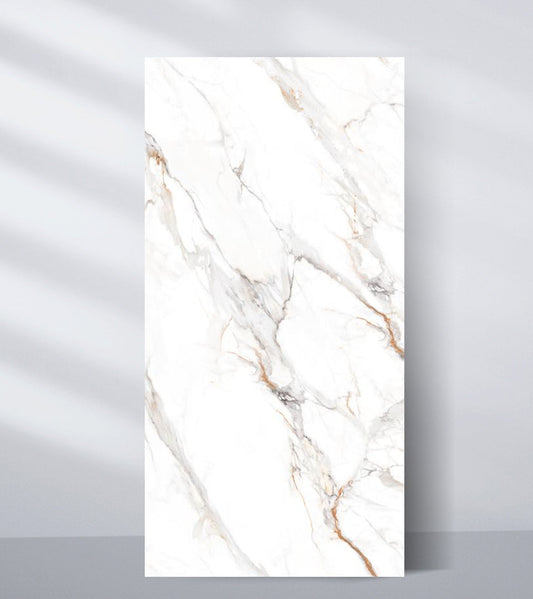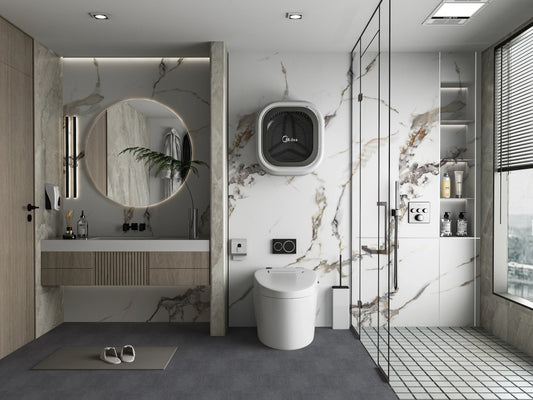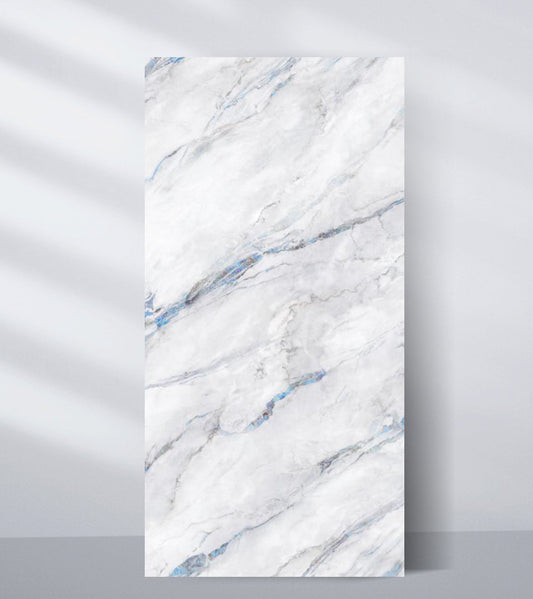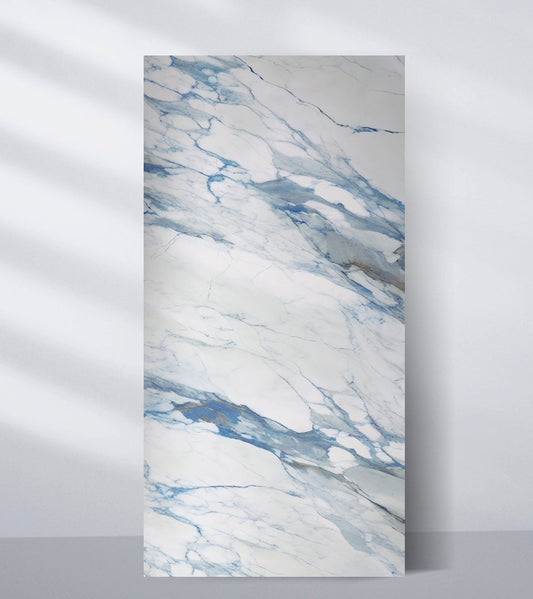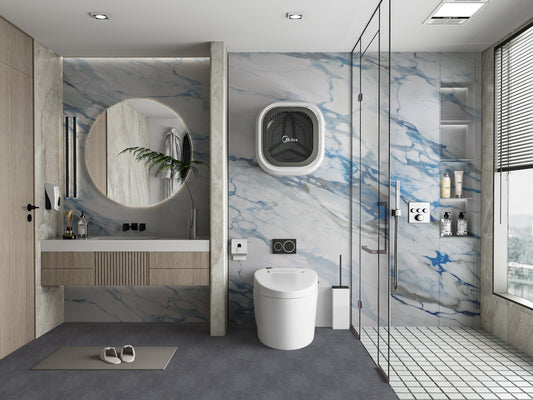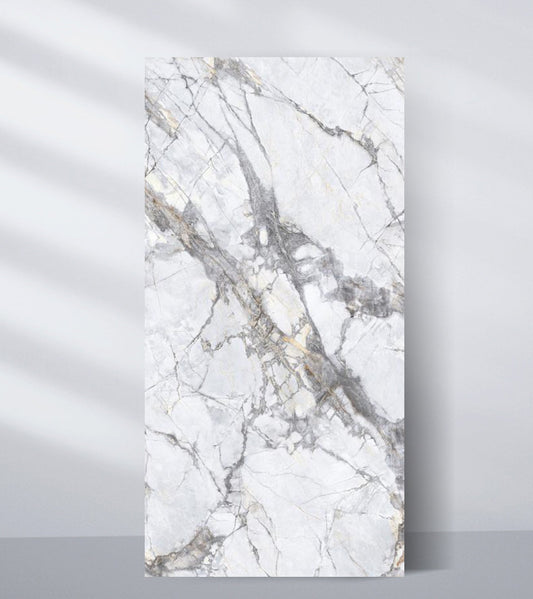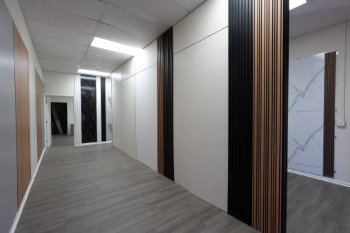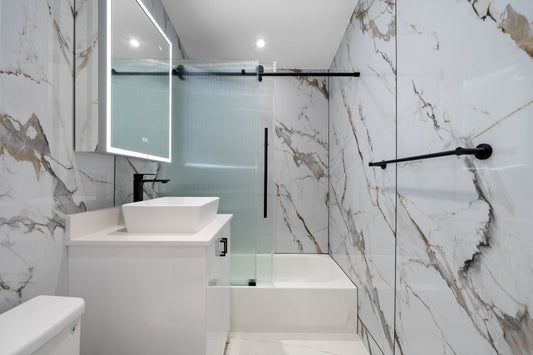Acoustic wall panels gain their final design element through flexible LED light strips which create an additional layer of ambiance and dramatic effect. The space achieves a designed appearance through the use of LED light strips which create soft perimeter illumination for slat walls and gentle panel backlighting and refined lighting effects that follow texture and grain patterns. The final result creates a modern atmosphere which feels cozy and looks great in photos while requiring no complex construction or demanding lighting systems.
Why Pair LED Strips with Acoustic Panels
Acoustic panels enhance sound quality through echo and flutter absorption which benefits both recording studios and residential areas including living rooms and bedrooms and commercial spaces including cafés and offices and boutique showrooms. The addition of a flexible LED strip enables you to create visual comfort through soft contrast and reduced glare and a welcoming light that showcases your selected panel texture. The lighting system creates a visual focus on the material while the acoustic panel works to reduce room echoes. The basic combination creates an improved experience for both home entertainment and professional business meetings.
The Look You’ll Get: Subtle Glow or Bold Statement
The panel perimeter receives backlighting which produces a luxurious floating effect. The gallery aesthetic emerges from thin ceiling and floor line reveals which maintain visual focus. The placement of LEDs in shallow channels behind wood slat acoustic panels produces a sophisticated effect through light and shadow that appears elegant in both photography and real-life settings. The use of RGB or RGBW strips in hospitality and retail spaces enables users to set on-brand event colors through RGB or RGBW strips which automatically switch to warm white lighting during other times.
Color Temperature, CRI, and Mood
White exists as multiple colors which form a complete spectrum. The lighting spectrum includes 2700–3000K for creating warm lounge environments and 3500–4000K for modern-neutral office and living space illumination and 5000K for achieving daylight-like brightness in showrooms and task areas. The CRI should reach 90+ to show wood tones and fabrics and artwork in their actual colors. The tunable white (CCT adjustable) strip technology allows you to achieve sunrise-to-sunset adaptability through its ability to change from warm to cool colors throughout the day.
Static White, RGB, or RGBW—Which Is Right
A high-CRI static white strip strip provides elegant timeless ambience while being easy to control for your goal. The RGB lighting system enables color control for events and mood setting but RGBW adds a separate white channel for basic illumination needs. Designers select RGBW for maintaining perfect white appearance and color accuracy before using color effects for special occasions.
Dimming and Smart Control Options
The implementation of dimming functions stands as an essential requirement for achieving layered lighting effects. The combination of 24V dimmable LED strips with appropriate drivers enables users to control their lighting through wall dimmers and RF remotes and smart systems. The integration of low-voltage strips with Wi-Fi or Zigbee or Z-Wave controllers enables smart home users to create custom scenes that combine their overhead lighting with lamp illumination. Users can activate pre-programmed scenes through voice commands which include "Movie Night" and "Focus Mode" and "After Hours".
Acoustic Performance Considerations
The addition of light does not result in any loss of acoustic performance. The LED strip can be placed in a reveal or behind a panel or within a shallow channel that does not obstruct the absorber's face to maintain its performance. The absorber remains functional when you use thin aluminum channels together with low-profile diffusers to direct light while preserving the open area. The objective is to illuminate the panel edges and surfaces instead of blocking them.
Planning Your Layout
Start choosing to surround the panel with light or use vertical edges to create height or place the glow at the top and bottom edges for a framing effect. Determine the location for the LED driver installation between cabinet spaces by focusing on the main wall section. Determine which area of the wall should display the glow effect by and closet areas and ceiling voids while creating an organized cable route. The installation process requires you to divide the space into separate zones for different areas. The ability to operate separate zones enables you to control both brightness and color settings throughout the room.
Choosing the Right Strip: Voltage, Wattage, and Brightness
The 24V flexible LED strip works best for most feature walls because it enables extended runs without significant voltage reduction. The product output measures between 7 watts and 14 watts for each meter of length. The output level for soft halo effects should be set to lower values but wall washing and tall ceiling illumination require higher output levels. The combination of high-density LED strips with diffused technology produces clean light without hotspots when you view the strip through slat gaps.
Aluminum Channels and Diffusers
LEDs require a cool operating environment to function properly. The slim aluminum heat sinks function as heat sinks which extend product life while creating a professional appearance. The frosted diffuser transforms the diode light into a single line of illumination which produces an upscale effect. The installation of shallow surface channels which fit behind wood slats or along their edges provides a hidden solution to manage both glare and light spill.
Power Supplies and Sizing (Simple Math)
Calculate the total wattage of your strips by multiplying their length with the watts per meter rating then select a driver that provides at least 20% extra power capacity. A 96–120 watt driver should be selected for 80 watts of total strip power to achieve cool and reliable operation. The use of individual drivers for each zone in long runs prevents voltage drop which ensures uniform brightness across the entire length. The use of parallel connections between drivers and runs maintains equal light output.
Installation Basics You Can Expect
The work area needs to be free from moisture and dust. The panel and light need to be dry-fitted before inspection of sightlines and glow. The application of adhesive-backed strips should occur on aluminum channels instead of porous materials. The installation of leads should occur behind panels and inside trim to achieve a completely hidden cable system. The strip requires an L-shaped connector or a smooth bend to create corners without creating folds. All components need testing before you install them permanently. The selection of IP-rated strips for powder room areas requires proper choice while keeping drivers stored in dry areas that remain accessible.
Safety, Standards, and Peace of Mind
The installation requires UL-listed components whenever possible while following building codes and electricians must perform hardwiring and mains dimmer integration. The safety and energy efficiency of low-voltage lighting depend on correct driver selection and proper fusing and cable gauge installation. A well-planned installation will result in a permanent solution.
Design Ideas That Always Work
Acoustic panels transform into sculptural pieces through perimeter floating effects which create decorative elements without requiring extensive building work. The vertical lighting of slat walls creates a visual effect that highlights both the pattern and vertical dimensions of the space. The shallow top reveal creates a gentle "crown" effect which makes the ceiling appear higher. Brand walls and home theaters benefit from RGBW accent lighting which enables color adjustments yet maintains a white setting for regular use. The combination of neutral-white LED strips with acoustic panels placed behind desks and conference areas in offices and open-plan homes helps reduce eye strain and improves screen visibility.
Maintenance and Everyday Use
The LED strip lighting requires no maintenance because it operates without any need for upkeep. Perform dust removal on diffusers during panel cleaning and use a soft damp cloth for occasional cleaning needs. The system operates without bulb replacement because it maintains continuous operation through its quiet and dependable design. You can modify your scene by replacing controllers or adding new zones without needing to touch the wall installation.
Buying Guide: What to Look For
Select 24V power with CRI 90+ and the color temperature which matches your room's requirements. Verify that you possess the correct driver and control system for dimming and smart scene functionality. The combination of aluminum channels with diffusers provides both a sophisticated appearance and extended LED lifespan. Determine a convenient spot for the driver installation and verify you have sufficient lead wire and connectors to maintain organized wiring. Test the brightness of your LED strip by purchasing a small section before installing it behind your panel during evening hours.
Frequently Asked Questions
The placement of LEDs in reveals or behind panels without face coverage will not impact acoustic performance of the panel. The acoustic performance of the panel remains intact when you maintain shallow open channels. The acoustic benefit will remain intact when you maintain shallow open channels.
Are these strips DIY-friendly?
The installation process of these strips proves to be achievable for most homeowners. The installation of hardwired dimmer systems and smart system integration requires professional electrician assistance.
Do I need aluminum channels?
The use of aluminum channels provides three essential benefits which include heat management and professional finish and clean diffusion of light.
The RGBW system enables users to achieve excellent white light output while maintaining color functionality. Yes. The RGBW system enables white light operation through its dedicated white channel which maintains natural lighting during regular use while allowing color access during specific times.
The Takeaway
A flexible LED light strip for acoustic wall panels provides a tiny solution which creates substantial effects. The combination of reduced noise and enhanced comfort levels creates spaces that appear finished through the addition of a layered lighting effect. The right combination of color temperature and CRI with dimming capabilities and a clean installation turns your wall into a decorative element that delivers daily functional benefits.

